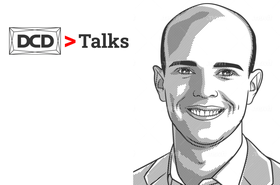A recent Forrester study revealed that 75 percent of colocation firms are losing business because they lack adequate sustainability measures. With increasing government regulation and customers requiring operators to have a sustainability strategy in alignment with their own, colocation operators can take another critical step toward improving sustainability by leveraging a sometimes-overlooked asset — data center infrastructure management (DCIM) technology.
DCIM helps colocation operators better understand and optimize the energy efficiency of whitespace across their facilities. Through monitoring and management tools, DCIM enables detailed data capture at a granular level, aiding in sustainability reporting. Colocation operators can monitor real-time PUE, real-time cooling control, and share client data down to the rack level.
Improving colocation whitespace efficiency with DCIM 3.0
A newer approach, called DCIM 3.0, can help colocation providers ramp up decarbonization efforts by better managing IT hardware and infrastructure equipment. The following DCIM 3.0 capabilities provide enhanced visibility to colocation operators, but also open up a new level of sustainability reporting for clients, a key feature to help secure sustainability-minded tenants.
Real-time power usage effectiveness (PUE)
PUE is the key metric used to understand how energy flows in a data center. While colocation operators are likely tracking their facility-wide PUE, DCIM enables this in real time. It also allows partial PUE per client, so customers can understand the impact of power consumption.
Computational fluid dynamics (CFD) and real-time control
DCIM’s monitoring capabilities are helpful on their own. Still, one of the best ways to use this information is through CFD simulation to understand hot spots and how to improve efficiencies within the cooling infrastructure. Operators can then take this to the next level with real-time cooling control that leverages artificial intelligence to optimize airflow and dramatically reduce cooling energy consumption.
Client-level/rack-level reporting and tenant portal
DCIM 3.0 allows operators to include carbon impact, total efficiency, and other metrics to show each client specific opportunities to reduce their energy consumption. It also introduces the opportunity for creative rebates and other opportunities to incentivize tenants to become more efficient, which reduces costs related to surplus cooling and stranded capacity.
Try out DCIM 3.0 now
Schneider Electric’s EcoStruxureTM IT platform delivers advanced DCIM 3.0 capabilities to help colocation providers track energy usage, improve PUE, and reduce their carbon footprint.
With EcoStruxure IT, operators can create Advanced Custom Solutions (ACS) that enable data collection and reporting on specific sustainability metrics aligned with their carbon-reduction goals.
EcoStruxure IT’s comprehensive portfolio includes monitoring, management, analysis, and modeling capabilities. In addition, it is vendor-neutral, so operators can leverage it to get a comprehensive view of their entire ecosystem, no matter how spread out.
One colocation provider, EcoDataCenter in Sweden, implemented EcoStruxure IT and other Schneider offerings to achieve a PUE of 1.15 and substantially improve energy efficiency. Colocation and data center operators looking for help with their sustainability strategies can request a demo by clicking here.
More from Schneider Electric
-

Sponsored The DCIM 3.0 trend explained in 500 words
Data center infrastructure management software was initially all about supporting PC servers. But DCIM 3.0 isn’t just about the data center, it’s about managing all connections between users and applications
-

Sponsored DCIM 3.0: The next evolution in colocation capacity management
Optimizing operations in the colocation data center with next-gen DCIM software
-

DCD>Talks DCIM 3.0 with Steven Brown, Schneider Electric
At our latest DCD>Connect London event we sat down with Stephen Brown, segment director of cloud and service providers at Schneider Electric, to talk about the possibilities with DCIM 3.0

